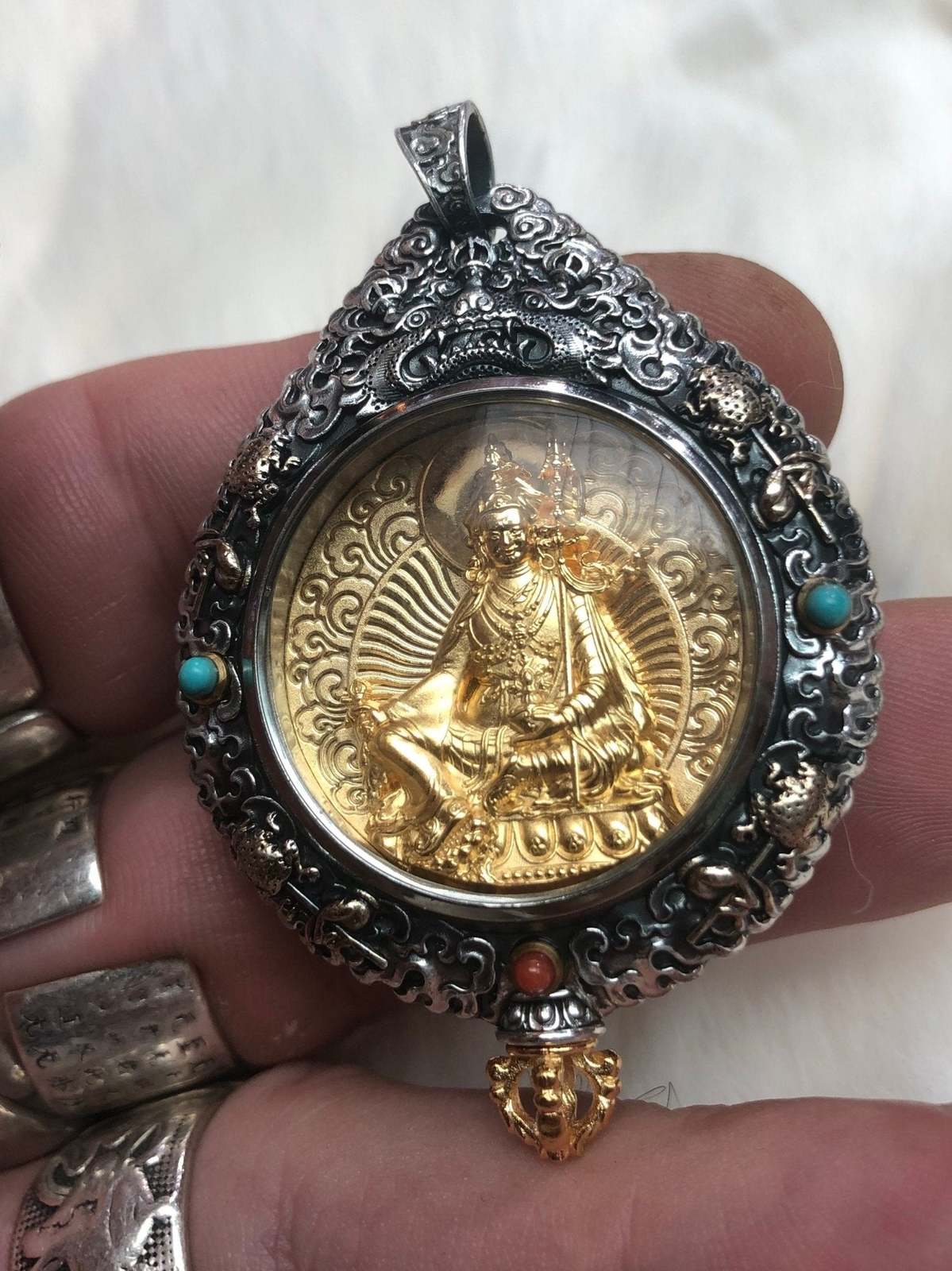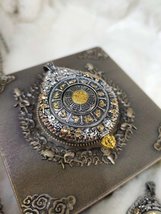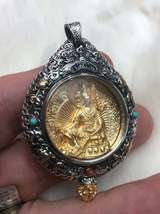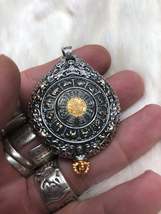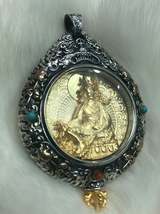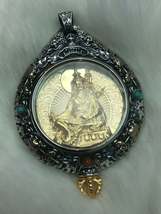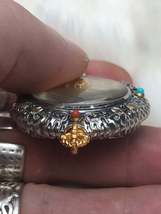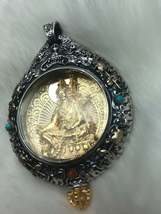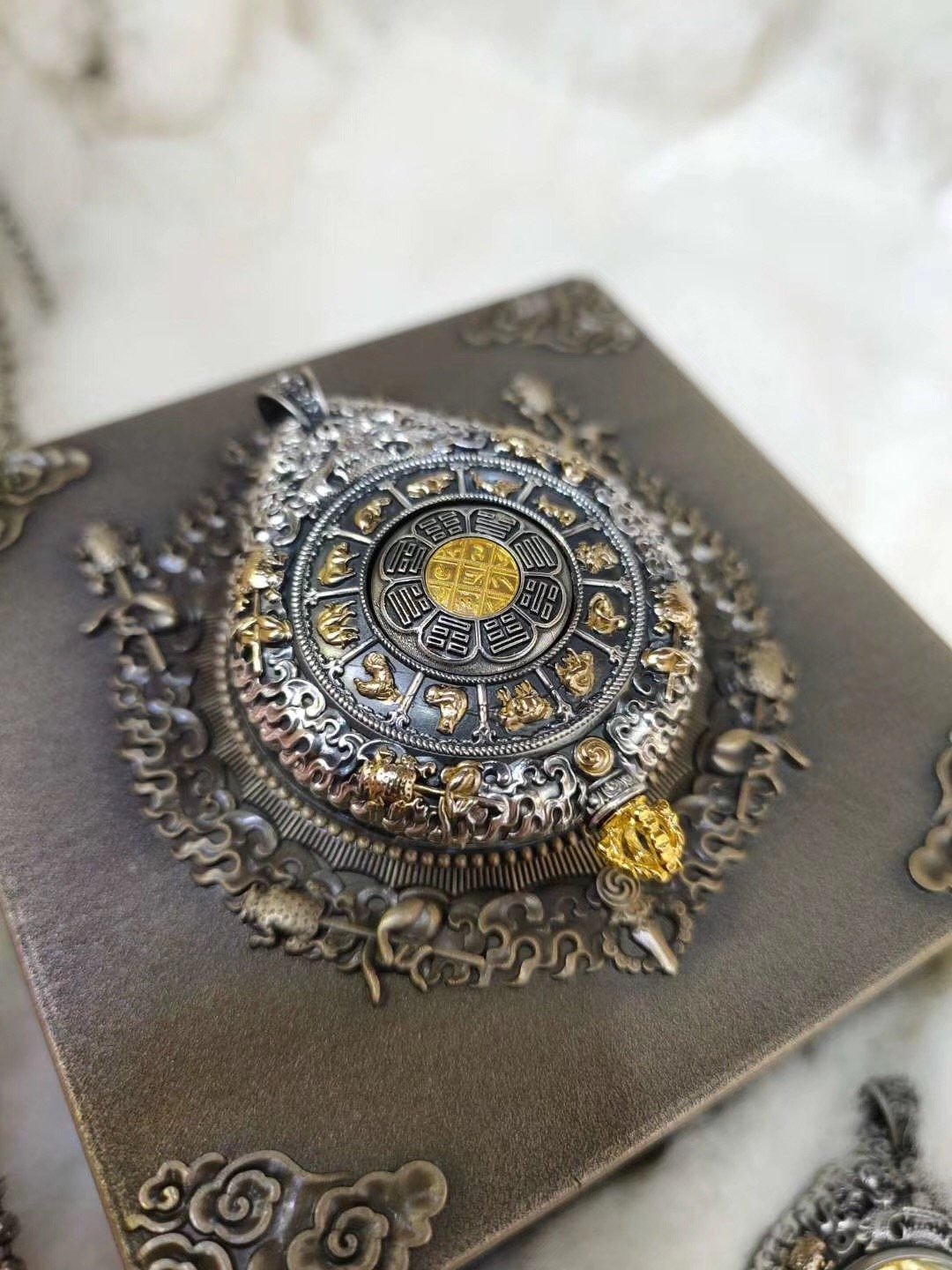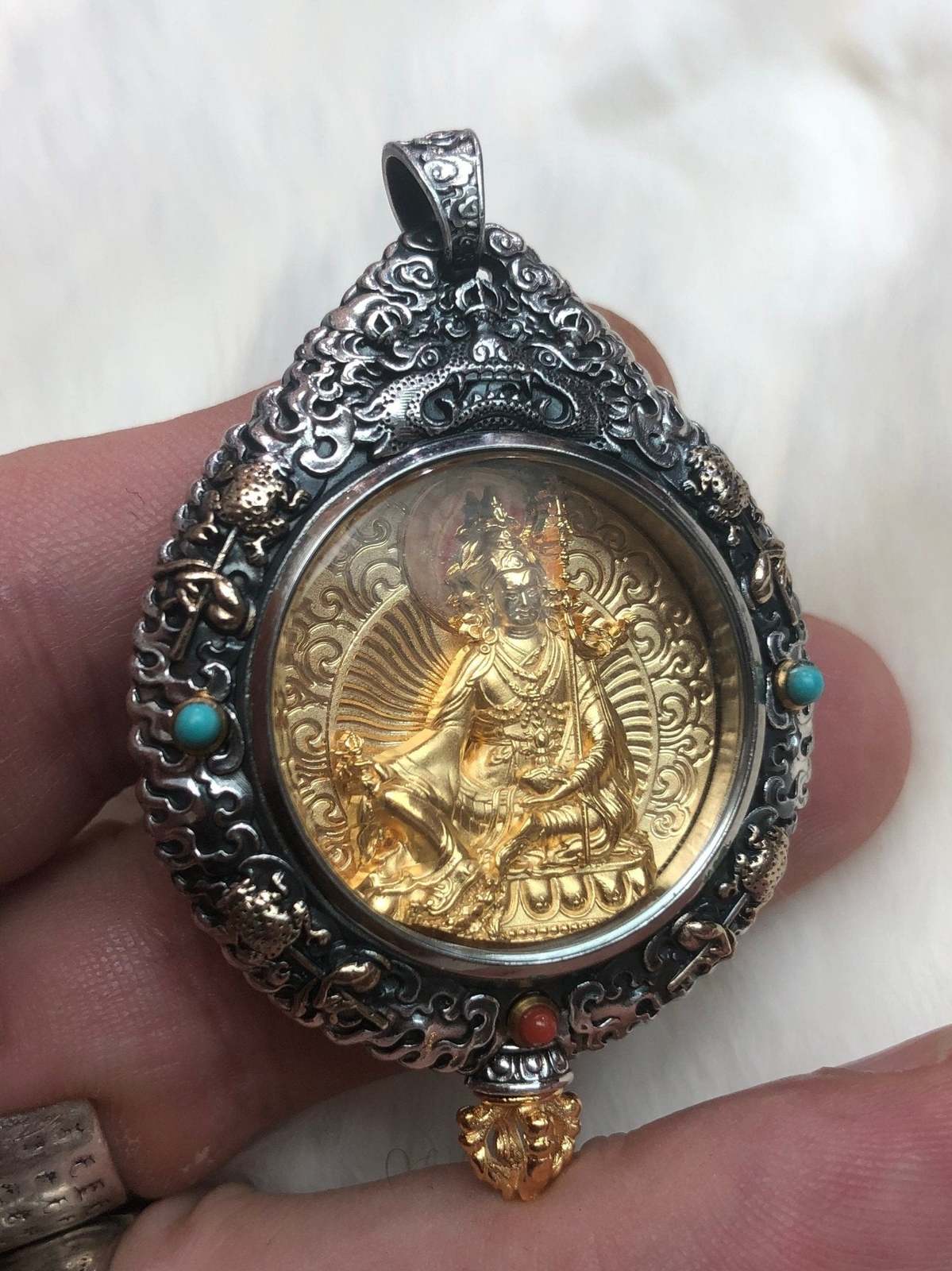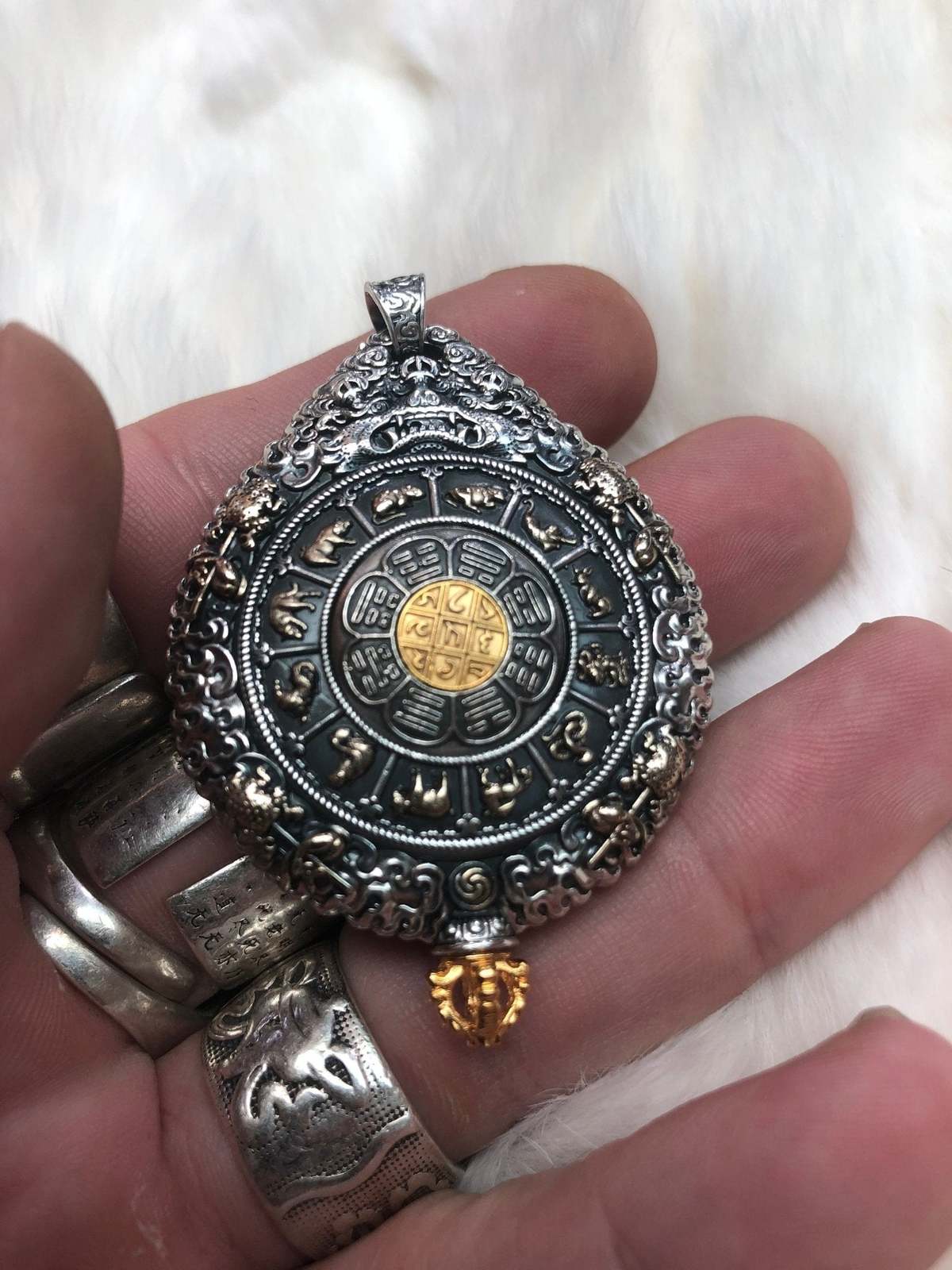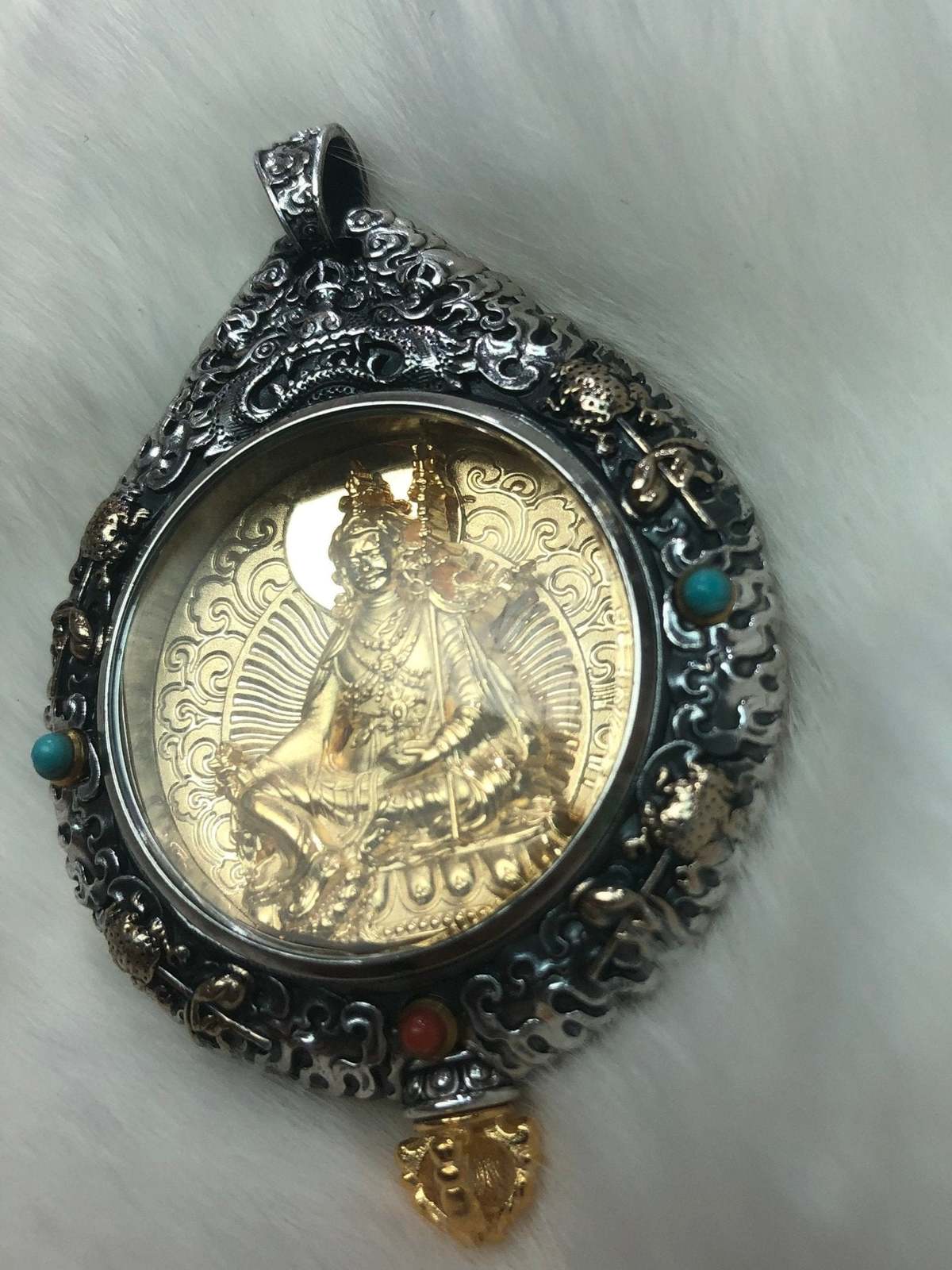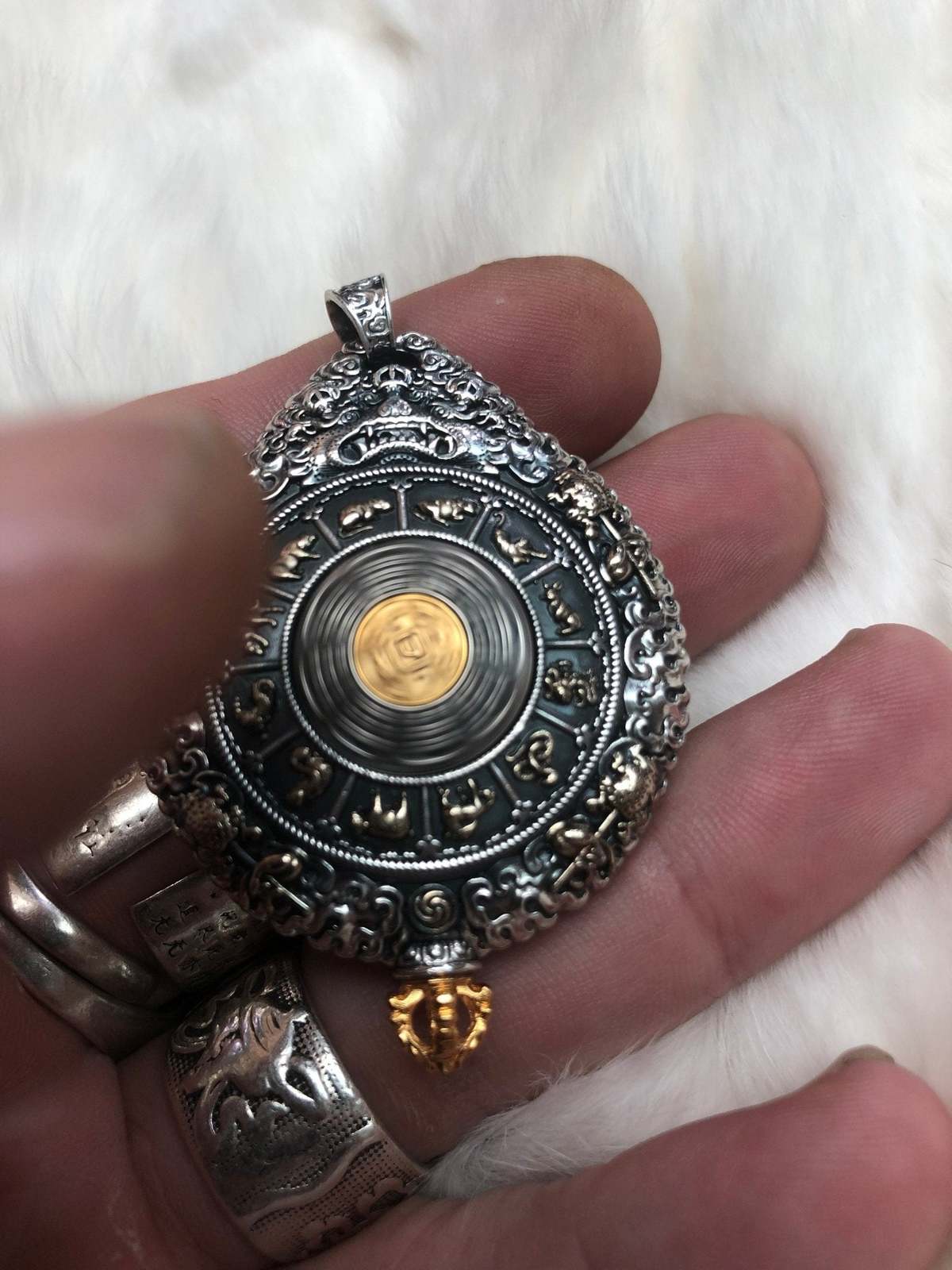Rendered at 09:53:23 05/02/25
Free Shipping
Buddha pendant. Guru Rinpoche. Tibetan ghau
£353.51 GBP - £381.97 GBP
Ships from
China

Shipping options
Offer policy
OBO - Seller accepts offers on this item.
Details
Return policy
Full refund available for DOAs
Purchase protection
Payment options
PayPal accepted
PayPal Credit accepted
Venmo accepted
PayPal, MasterCard, Visa, Discover, and American Express accepted
Maestro accepted
Amazon Pay accepted
Nuvei accepted
Shipping options
Offer policy
OBO - Seller accepts offers on this item.
Details
Return policy
Full refund available for DOAs
Purchase protection
Payment options
PayPal accepted
PayPal Credit accepted
Venmo accepted
PayPal, MasterCard, Visa, Discover, and American Express accepted
Maestro accepted
Amazon Pay accepted
Nuvei accepted
Item traits
| Category: | |
|---|---|
| Quantity Available: |
Only one in stock, order soon |
| Condition: |
Unspecified by seller, may be new. |
| Type: |
Pendant |
| Title: |
Default Title |
Listing details
| Seller policies: | |
|---|---|
| Shipping discount: |
No combined shipping offered |
| Posted for sale: |
More than a week ago |
| Item number: |
1498004950 |
Item description
Buddha pendant. Guru Rimpoche (description below). Tibetan Ghau, high quality Buddha pendant
This Buddha pendant is a Tibetan ghau is a kind of portable altar in which the image of the possessor's chosen deity is kept, wrapped in silk clothes. The vast majority of Tibetans use the ghau, like this Buddha pendant, at home and carry it on their travels. They keep these ghaus, on a real altar at home. When traveling, it is attached to the back belt. This Buddha pendant serves as a protective symbol during travels and also allows its owner to prove his devotion to his deity.
Sterling silver 925
18k gold plate
Turquoise from Hubei province and Yunnan agate called "nan hong" (southern red) from Yunnan province in bezel settings on this Buddha pendant
Exclusively Chinese mineral, this agate called nan hong (southern red) gets its very particular color from its link with the cinnabar on the deposits. . Places of deposits (volcanic) Yunnan region baoshan site, Sichuan Liangshan site for the two unique deposits.
As a gemologist graduated from the National Institute of Gemmology in Paris, all our stones and materials for this Buddha pendant are appraised and certified.
Dimensions of the Buddha pendant: Dimensions: 58mm high by 40mm wide by 13.5mm thick
Buddha pendant weight about 56 grams.
Wheel of life on the back of the Buddha pendant, rotating
Spinning wheel on the back of the Buddha pendant thanks to a precision ball bearing developed in Germany.
The protective glass of the Buddha pendant is made of leuco sapphire like high-end watches.
Mixed Buddha pendant, Man and woman, children from 10 years old.
Buddha pendant color gold, silver, blue, red black and transparent.
DESCRIPTION AND DETAILS OF THE SYMBOLS OF THIS BUDDHA PENDANT
GURU RIMPOCHE
Padmasambhava, literally born of the lotus, is an eighth-century Buddhist master born probably during the first quarter of this century, in the Swat Valley in Pakistan, also called Guru Rinpoche (“precious master”).
Although he existed historically, nothing is known about him except that he participated in the construction, at the request of King Trisong Detsen, of the first Buddhist monastery in Samye in Tibet, which he left because of intrigues of court. A number of legends have grown up around the life and deeds of Padmasambhava, and he is widely revered as a "second Buddha" across Tibet, Nepal, Bhutan and the Himalayan states of India.
In Tibetan Buddhism, he is associated with terma literature, and is said to be an offshoot of Amitabha related to tertons to whom he would appear in visionary encounters and the practice of guru yoga, particularly in the Rime schools. Members of the Nyingma school consider him the founder of their tradition.
According to the legendary life of Padmasambhava, the latter was born a few years after the Parinirvana of the Buddha in miraculous form in the middle of a lake in the kingdom of Oddiyana located in the current valley of Swat.
He would have lived many centuries before coming to Tibet. For Tibetans in the line of Dzogchen Nyingmapa, Shakyamuni Buddha represents the principle of the Buddha who gives all the fundamental teachings gathered in the sutras. Padmasambhava is one with Shakyamuni Buddha but represents the still higher principle of the master who reveals all the initiatory teachings of the tantras.
In other words, They are not different but Buddha Shakyamuni represents the exoteric aspect of Buddhism while Padmasambhava represents the esoteric aspect. Padmasambhava is not only the founder of Buddhism in Tibet, he is also at the origin of the terma tradition or "Spiritual Treasures" transmitted by those who discover them, the Tertons of the Nyingmapa school. On several occasions in his teachings Padmasambhava prophesied the coming to Tibet of the Karmapas of the Kagyu school.
BUDDHIST WHEEL OF LIFE ON BACK OF BUDDHA PENDANT
In terms of symbols, the Buddha, seated under the bodhi tree, saw two things. First, he saw a Ferris wheel. This wheel embraces the totality of conditioned existence, it is the same extent as the cosmos, it contains all living beings. It turns without stopping: it turns day and night, it turns life after life, it turns era after era.
We cannot see when it started spinning, and we cannot yet see when it will stop spinning: only a Buddha sees that. The back of the Buddha pendant is also an excellent support for meditation in this sense.
EXPLANATION OF THE SYMBOLS IN THE MIDDLE OF THE BUDDHIST WHEEL OF THE BUDDHA PENDANT
this is
Added to your wish list!
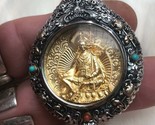
- Buddha pendant. Guru Rinpoche. Tibetan ghau
- 1 in stock
- Available in multiple titles
- Price negotiable
- Handling time 5 days.
- Returns/refunds accepted
Get an item reminder
We'll email you a link to your item now and follow up with a single reminder (if you'd like one). That's it! No spam, no hassle.
Already have an account?
Log in and add this item to your wish list.


